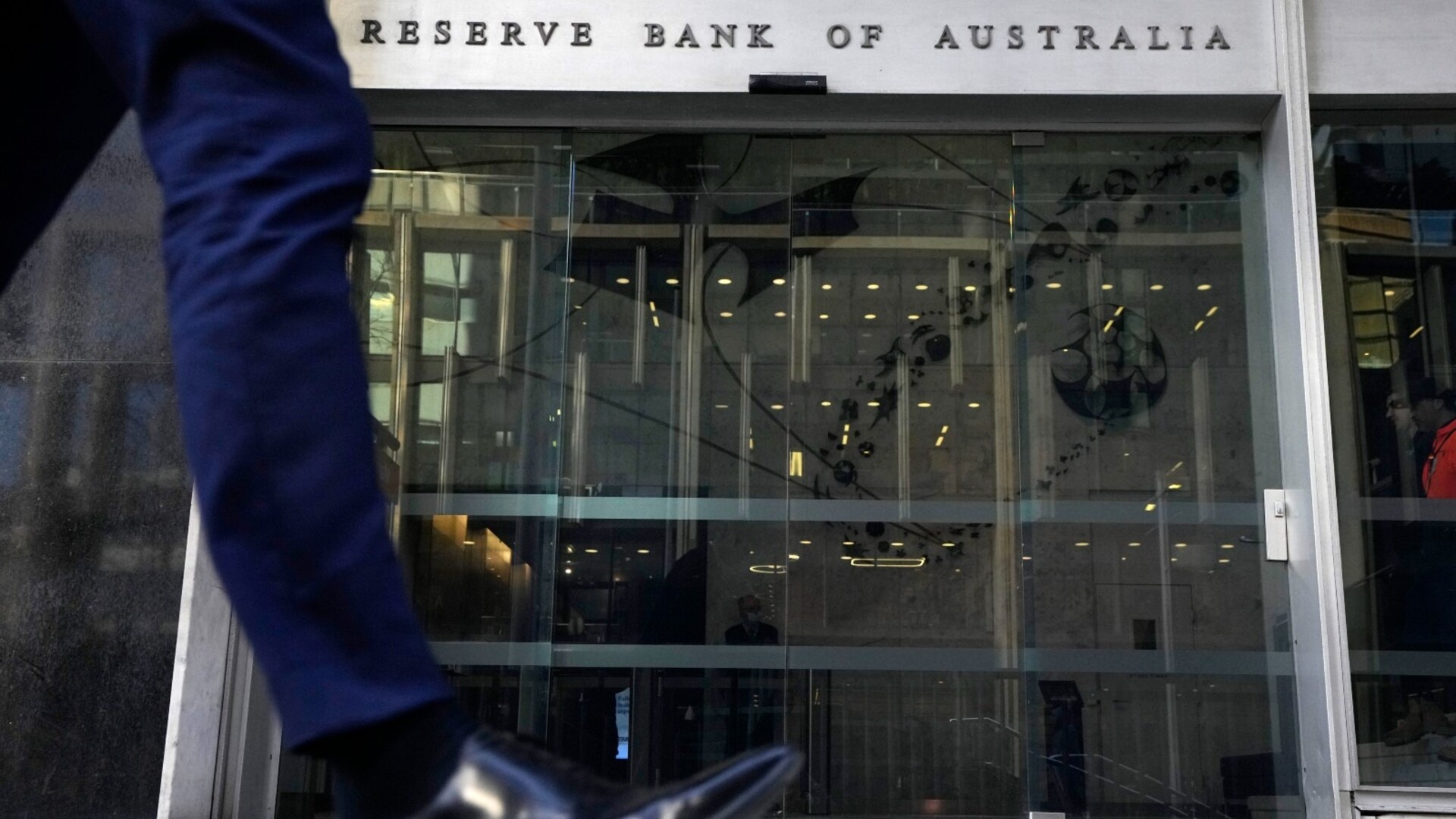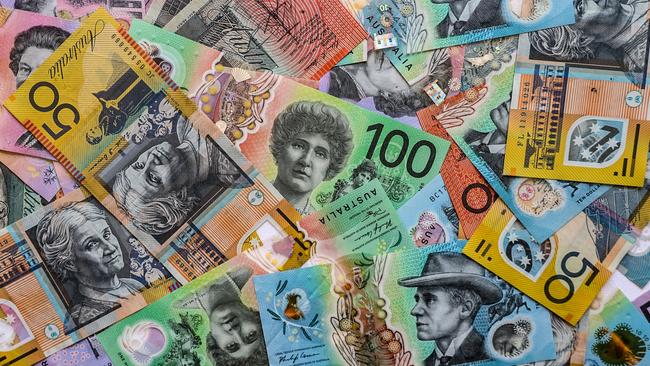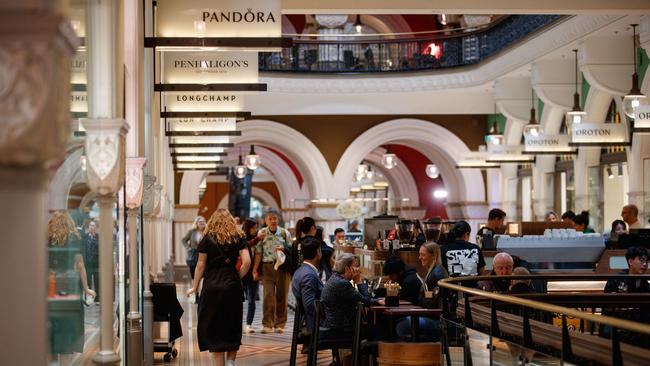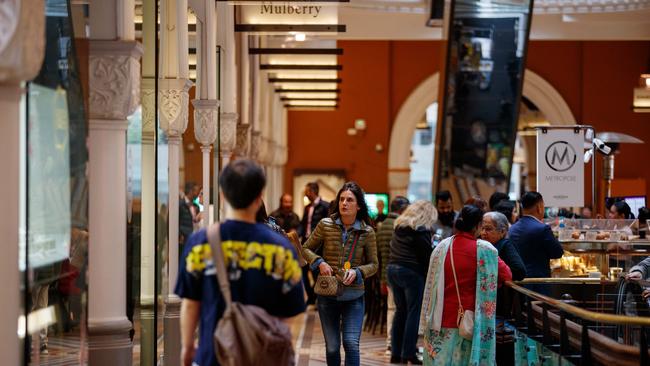‘Worst in the OECD’: Grim warning for Australia’s living standards
Aussies are getting poorer and it seems unlikely to change in the near future – but it may not be all bad news, according to industry figures.

Australia’s household recession has extended to its seventh consecutive quarter, with leading economists blaming weak wage growth and higher rates among other factors.
The latest data from the Australian Bureau of Statistics shows GDP grew 0.3 per cent in the September quarter, owing largely to government infrastructure projects and energy rebates.
The economy grew by 0.8 per cent in the 12 months to September – the slowest rate since the early 1990s recession, excluding the Covid pandemic.

The ABS data indicated household spending was flat in the September quarter, following a fall of 0.3 per cent in June.
The largest detractor from growth was electricity and gas spending due to the implementation of energy bill relief rates, which are treated as a shift from household to government expenditure in the national accounts.
On a per capita basis, Australia’s economy contracted 0.3 per cent as the amount of economic activity per person fell.
This means Australians are actually going backwards in terms of living standards, with real GDP per capita being a measurement of a country’s prosperity.
AMP chief economist Shane Oliver said real disposable income had been worse in Australia than across other OECD countries and has fallen significantly since 2020.
“Of course, this slump is exaggerated because it comes off the back of a surge through the pandemic due to payments like JobKeeper, “ Dr Oliver said.
“But even allowing for that, real disposable income per person has been stagnant for a decade.
“The problem is also evident in falling per capita consumer spending – which is down 2.8 per cent from its 2022 high - … (and) in the “per capita recession”, with per person GDP down 2.1 per cent from its 2022 high.”
Dr Oliver said the poor performance of household disposable income is a combination of weak wages growth, larger mortgage interest payments, bracket creep.
“Tax and interest payments are taking up an extra 5 per cent of income compared to three years ago,” Dr Oliver said.

BDO economics partner Anders Magnusson said while rate cuts would obviously help lift consumer spending, it would only provide a short-term hit, with productivity boosts needed to have a long-term impact.
“Addressing the GDP per capita recession hinges on improving output per hour worked,” Mr Magnusson said.
“The solution is not lowering the cash rate to ease mortgage pressures, but tackling the productivity puzzle head-on, such as through tax reform and better utilisation of existing labour supply.”
Mr Magnusson said he believed governments need to take a holistic tax approach with all options being on the table.
Dr Oliver shared a similar sentiment, saying productivity growth is the main driver of material living standards over long periods of time.
“These include the last major reforms being the GST, very strong population growth, and a lack of housing affordability,” the economist said.
Dr Oliver also blamed a lack of business investment and unclear climate policies as impacting Australia’s living standards.
Signs of life for the Australian economy
Despite Aussies seemingly going backwards, there have been some signs life is getting back to normal.
Aussies are getting more comfortable with their mortgage repayments despite the high cost of living, according to Westpac.
The major bank’s outgoing chief executive Peter King said at this month’s annual general meeting that the number of customers on hardship payments was falling, as mortgage holders adjusted to higher rates.
“The number of packages outstanding reached a peak of just below 20,000 in June and have since reduced to 17,500 at the end of November,” Mr King said.
But while the number of people on hardship provisions was falling, Mr King acknowledged “some are doing it tough with cost of living pressures.”

Retail economists are making even more upbeat predictions.
The positive forecast by Deloitte Access Economics partner Dave Rumbens shows real spending declining across six of the past seven quarters, as households struggle with higher interest rates, inflation and slowing wage growth.
“We’ve seen this in a much earlier uplift in searches for ‘sales’ in Google trends data as compared to 2023,” he said.
“This suggests that consumers are starting to shift from saving to spending, especially when there are good deals on offer.
“This shift has likely continued into November, off the back of saturated Black Friday campaigns last week.”
Mr Rumbens called it a “sign of hope” after retailers braved two recessions over the 18-month period.

He said the retail recession could soon be over, forecasting real retail turnover is expected to lift from -0.3 per cent in calendar year 2024 to 2.1 per cent in 2025 and 2.6 per cent in 2026, “as consumers get their spending groove back on”.
NAB is reporting bumper sales data from Black Friday and Cyber Monday transactions.
NAB said there was an overall 4 per cent increase in spending year on year.
The bank’s merchant terminal data has revealed spending that weekend was 23 per cent higher than a regular weekend, with retailers and hospitality businesses reporting more sales.
NAB executive Julie Rynski said the Black Friday and Cyber Monday sales were not just about retail, with the hospitality and travel sectors also seeing prices slashed.
“It’s a little too early to say that stage 3 tax cuts are the primary driver, but there are several factors at play,” she said.
Ms Rynski said these included shoppers making “more thoughtful” spending decisions and seeking out the best deals, along with businesses taking advantage of the weekend’s publicity and stable interest rates.


